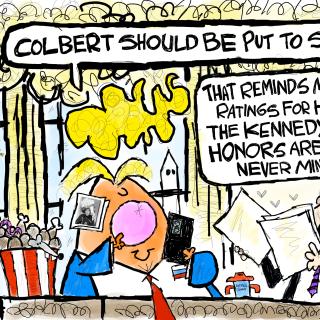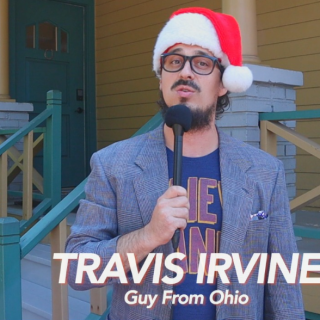Advertisement
The year was 1968. The Reverend Dr. Martin Luther King Jr. was assassinated. Senator Robert F. Kennedy was assassinated. The nation was in turmoil. There were riots in cities across America. That following school year, the Columbus East High School Basketball and Baseball Teams both won State Championships in Ohio, an unheard of feat at that time.
The events of that championship season, both on and off the baseball diamond and basketball courts, is the basis of the latest book, Tigerland 1968-1969: A City Divided, A Nation Torn Apart, and a Magical Season of Healing, by Wil Haygood.
Haygood made several appearances around Columbus to promote the book upon its September 18 release, including the place that was the focal point of the book, Columbus East High School.
On September 20, Haygood spoke to an audience at Columbus East High School, where several surviving members of the 1969 State Championship Baseball and Basketball Teams were in attendance.
“It was (East High Principal) Jack Gibbs that kept East High School together during the days after Dr. King was shot,” Haygood said to a full audience at the East High School auditorium.
This book is not entirely about sports. “One of the things that was critical (in writing Tigerland), was that I didn’t want it to be a straight away sports book. There was so much going on in the Nation (at that time).” Haygood said. “People had to find heroes where ever they could. Were they really in a basketball team? Were they at Harley Field playing baseball?”
The book interweaves the two team's runs for the Championship, with the socioeconomic struggles of the 1960s. One chapter, would be about the basketball team’s heated rivalry with Linden McKinley during that era, while another chapter would be about the chain of riots and protests in the months that followed the Championship Season. Another chapter in the book, “What the Mothers Fear Most”, paralleled the basketball mothers’ worries with the Emmett Till tragedy in 1955 Mississippi, to 1969 Columbus.
These players did not come from the stereotypical nuclear sitcom family homes of that era. Eight of the twelve basketball players had mothers from the South. Most of the players mothers were domestic maids for rich families in Bexley, Upper Arlington and Worthington. The star of the championship baseball team, future New York Met Garnett Davis, his father was in prison.
Many of the Tigers from the 1969 State Championship Team would go on to college basketball success. Ed Ratliff and the late Alonzo “Nick” Connor, were the leaders of the team. Other key players included Roy Hickman, Kevin Smith, Larry Walker (who would later coach the Tigers to another State Title in 1979), and North High transfer Dwight “Bo-Pete” Lamar.
Lamar transferred to East after Lamar’s afro was deemed as a “sign of militancy” by North’s white coach and athletic boosters. “Lamar’s mother said, ‘I didn’t leave the south for you to lose your dignity,’” Haygood said. Lamar’s family moved from the Weinland Park area to Poindexter Village.
The Tigers’ Head Basketball Coach, the late Bob Hart, who was white, won three State Titles during his nine seasons as Head Coach of the Tigers, from 1962 to 1971. Hart, a World War II veteran, spent his coaching career fighting against the injustices his players received, especially during the segregated 1960s. The 1967-68 (also State Champions) and 1968-69 Tigers were inducted into the Ohio High School Basketball Hall of Fame in 2007.
Both at East High, and the next day at Columbus State Community College, Haygood talked about many things, including the parallels between sports and politics, and the 1977 Supreme Court Decision that would change Columbus City Schools forever.
“Why doesn’t East have the same resources as (Thomas) Worthington High School or Upper Arlington High School,” Haygood said during his conversation with Columbus State Community College President Dr. David Harrison about the desegregation of East High School. “All of the black students were scrunched into one school. They couldn’t build a second high school on the East Side. This lawsuit went all of the way to Federal Court Judge Robert M. Duncan.”
Duncan, a former school teacher, heard the infamous “Penick vs. Columbus Board of Education” case in 1976 that would forever change the face of Columbus City Schools.
There will never be another dynasty like the 1967-69 Basketball Tigers. Not long after the Tigers won their last State Basketball Championship in 1979, busing was mandated throughout the Columbus City Schools District. The school went from being over 95 percent Black students, to 55 percent Black students. The school is currently sitting under capacity, with about 98 percent Black students, today.
Other Haygood spots on his book tour included Bexley High School and the Historic Lincoln Theatre. Haygood will have another talk at the Wexner Center for the Arts, “Tigerland: Columbus at the Intersection of Sports and Race” on October 8.
Tigerland 1968-1969: A City Divided, A Nation Torn Apart, and a Magical Season of Healing is available in bookstores everywhere.



